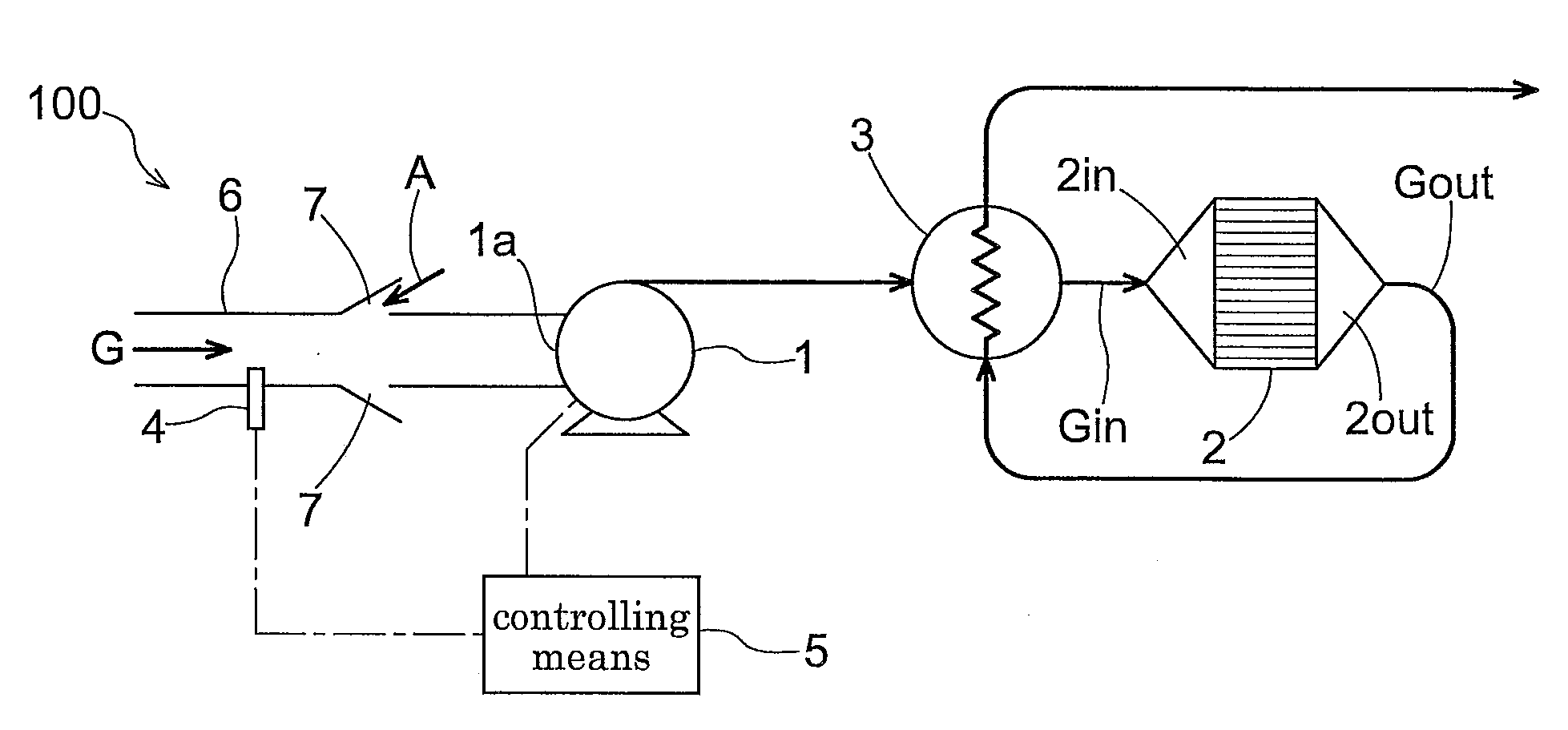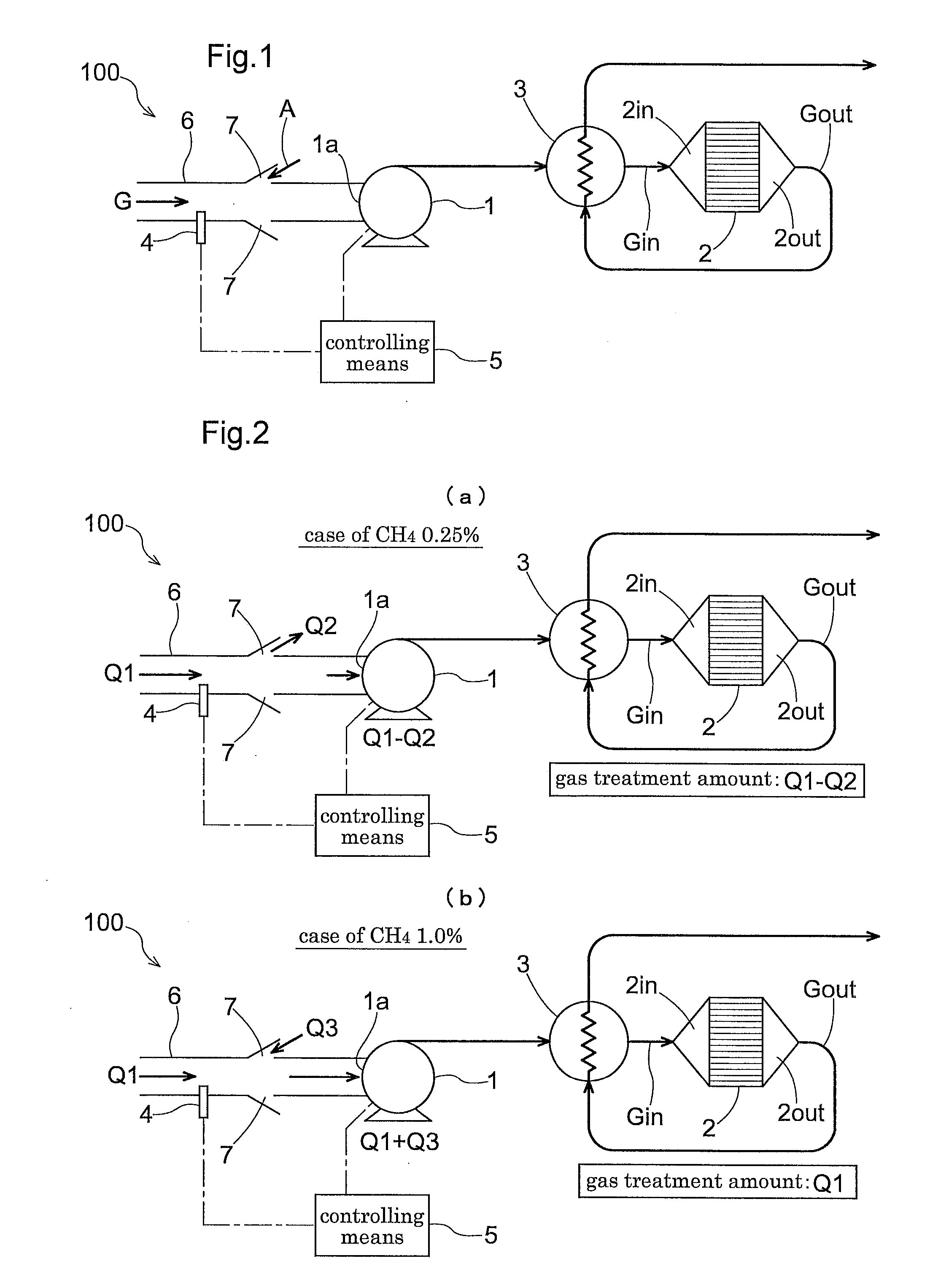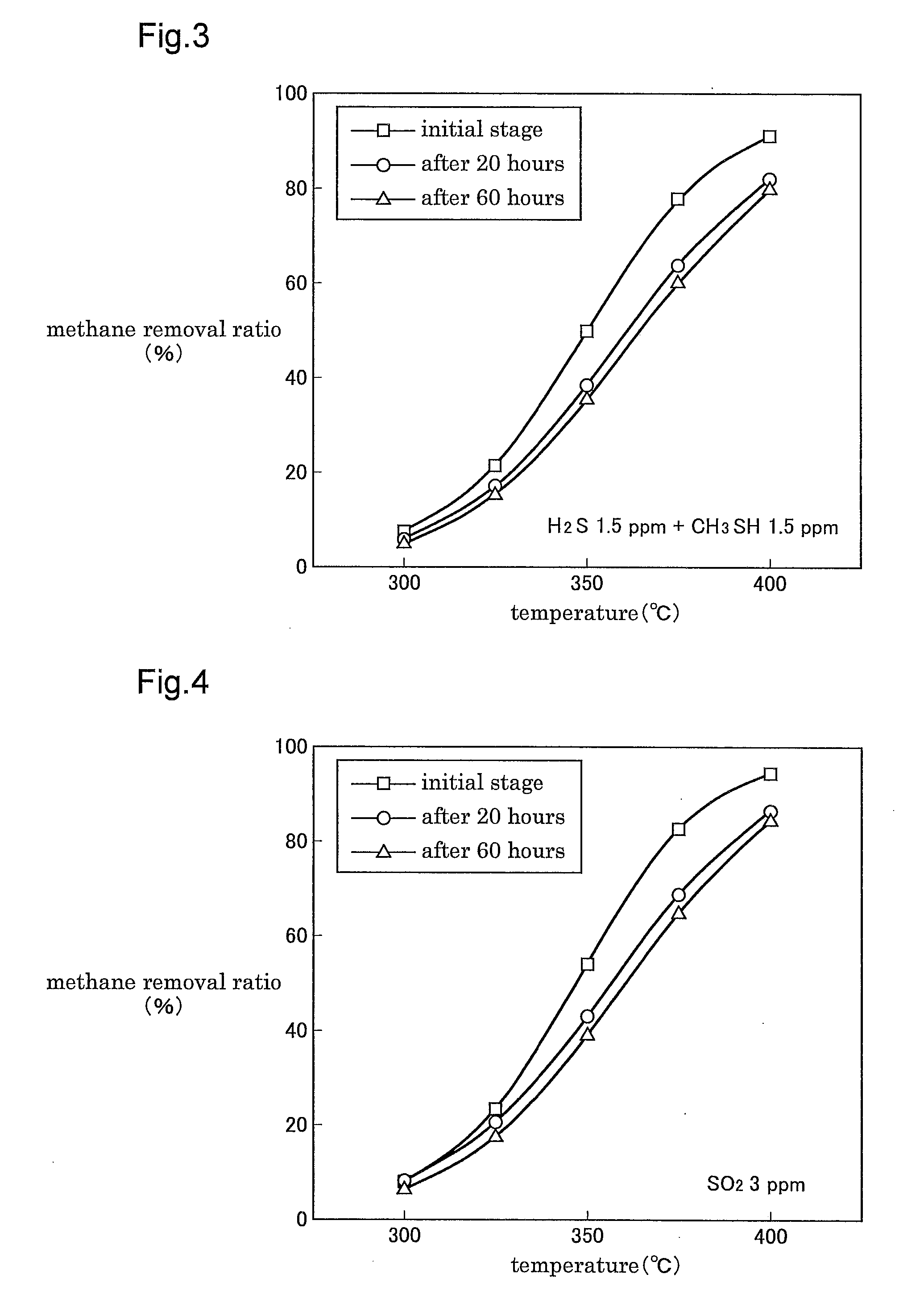Method and Apparatus for Removing Low-Concentration Methane
a low-concentration, methane technology, applied in the direction of separation processes, physical/chemical process catalysts, combustion types, etc., can solve the problems of significant safety concerns, difficult oxidization removal of methane at low temperatures of 400° c, and inability to process, so as to reduce the capacity of heat exchangers, improve economic performance, and prevent activity inhibition good
- Summary
- Abstract
- Description
- Claims
- Application Information
AI Technical Summary
Benefits of technology
Problems solved by technology
Method used
Image
Examples
first embodiment
[0117]A low concentration methane removing apparatus 100 according to the present invention includes a blower 1 for introducing a treatment-object gas G to the apparatus 100, an oxidization catalyst 2 for contact-oxidizing methane (FIG. 1 shows a condition where the oxidization catalyst is accommodated within a treatment cylinder), a heat exchanger 3 for effecting heat exchange between gases Gin, Gout before and after passage through the oxidization catalyst 2, a methane concentration detecting means 4 disposed upstream of the oxidization catalyst 2, and a controlling means 5 for controlling a blowing rate of the blower 1 in accordance with a detection value of the detecting means 4. Upstream of a suction inlet 1a of this blower 1, there is provided a suction pipe 6 for drawing in an amount of treatment-object gas G from a suctioning portion; and between an outlet of this suction pipe 6 and the suction inlet 1a of the blower 1, there is provided a ventilation portion 7 providing a c...
second embodiment
[0149]As shown in FIG. 11, the methane oxidization removing apparatus 100 of the invention can be provided, if needed, with a flow amount distributing means 201 and a pipe 202 for refluxing a portion of the exhaust gas from the apparatus outlet side to the apparatus inlet side.
[0150]With co-utilization of this method of refluxing a portion of the exhaust gas from the apparatus outlet side to the apparatus inlet side, even when the methane concentration is about 1.2%, it is still possible to maintain the catalyst outlet temperature at 550° C. or lower and the catalyst inlet temperature at 350° C. or higher.
modified embodiments of first and second embodiments
[0151](1) In the foregoing embodiments, the blower was provided at the inlet of the apparatus. However, it does not matter as long as this blower is capable of introducing the treatment-object gas to the oxidization catalyst. So, it is possible to configure such that the blower is disposed not at the inlet but at the outlet of the apparatus thereby to establish a negative pressure inside the apparatus relative to the atmospheric pressure.
[0152](2) Preferably, the methane concentration detecting means should be disposed in close vicinity of the inlet of the apparatus from the viewpoint of detecting variation in the methane concentration as quickly as possible and this detecting means should be disposed within the suction pipe from the viewpoint of detecting the methane concentration of the treatment-object gas. However, in the construction of the present invention, as the treatment-object gas amount and the air amount are determined in accordance with the blowing rate of the blower, ...
PUM
| Property | Measurement | Unit |
|---|---|---|
| temperature | aaaaa | aaaaa |
| temperatures | aaaaa | aaaaa |
| temperature | aaaaa | aaaaa |
Abstract
Description
Claims
Application Information
 Login to View More
Login to View More - R&D
- Intellectual Property
- Life Sciences
- Materials
- Tech Scout
- Unparalleled Data Quality
- Higher Quality Content
- 60% Fewer Hallucinations
Browse by: Latest US Patents, China's latest patents, Technical Efficacy Thesaurus, Application Domain, Technology Topic, Popular Technical Reports.
© 2025 PatSnap. All rights reserved.Legal|Privacy policy|Modern Slavery Act Transparency Statement|Sitemap|About US| Contact US: help@patsnap.com



